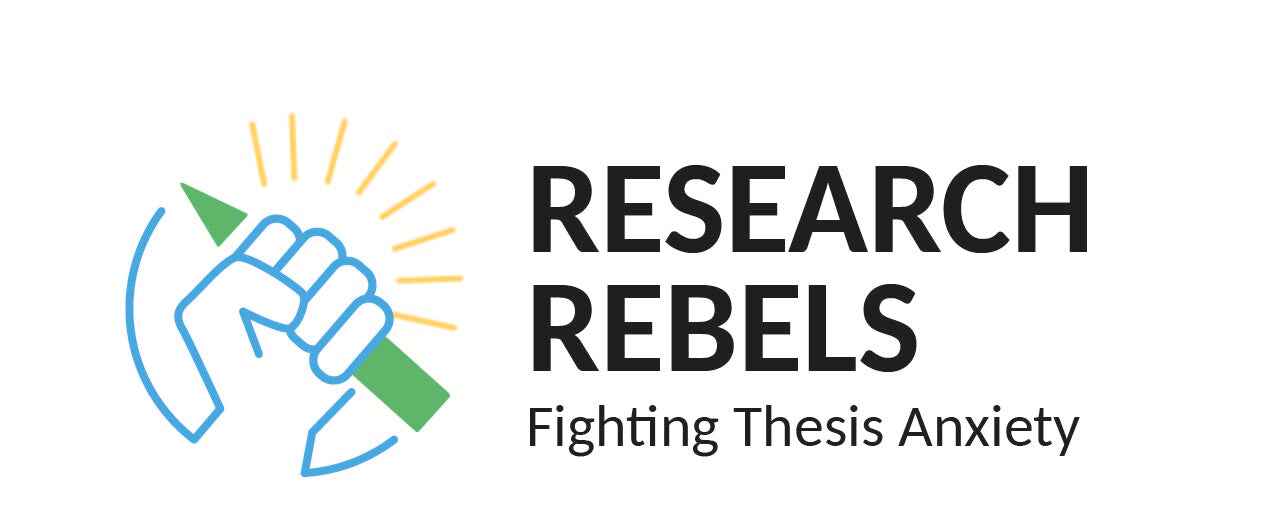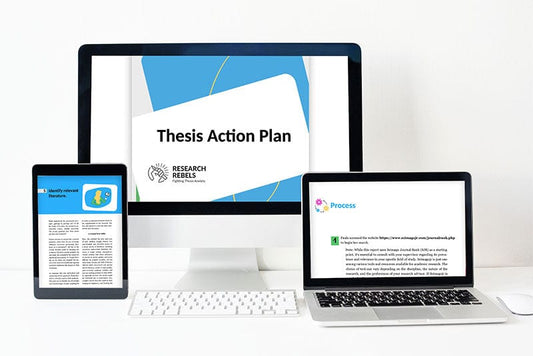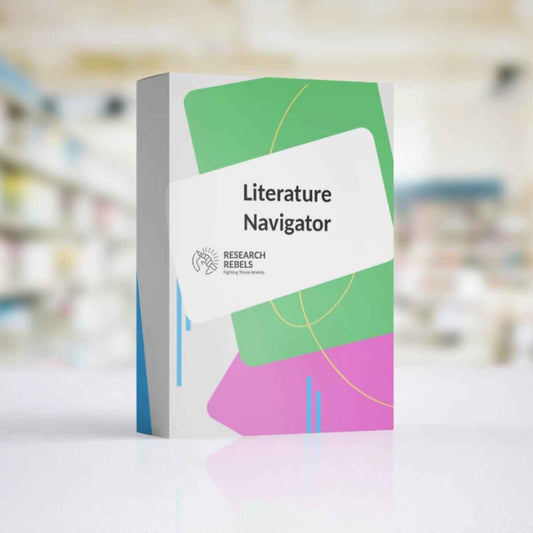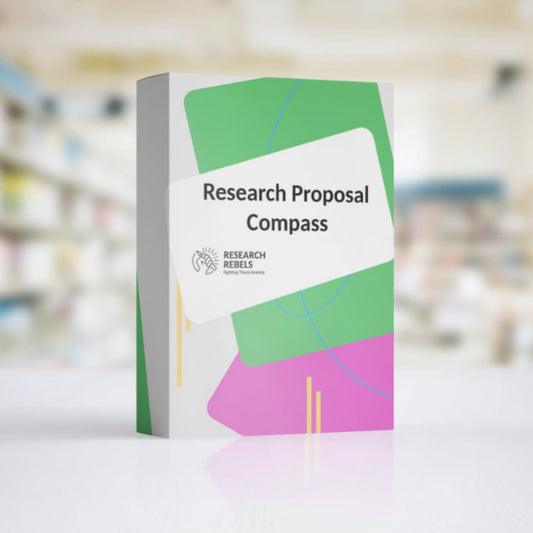Essential Research Proposal Headings for Comprehensive Planning
Creating a research proposal is like drawing a map for your study journey. The proposal helps you plan your work, figure out what you need, and stay on track. It's also important for showing others why your research matters and how you will do it. In this article, we'll look at the key parts of a research proposal to help you make a strong plan.
Key Takeaways
- A clear title page sets the stage for your proposal.
- The introduction explains the research problem and why it matters.
- The literature review shows what others have done and where your work fits in.
- Your research design outlines how you will collect and analyze data.
- A well-organized reference list is crucial for credibility.
Title Page
Essential Elements of a Title Page
Your title page is the first thing readers see, so it must be clear and informative. It should include:
- The proposed title of your project
- Your name
- Your supervisor’s name
- Your institution and department
If your proposal is lengthy, consider adding an abstract and a table of contents to help readers navigate your work.
Formatting Guidelines for Title Pages
Follow your institution's specific formatting guidelines for the title page. Generally, the title should be centered and in a larger font size than the rest of the text. Your name and other details should be in a smaller font and placed below the title.
Common Mistakes to Avoid
Avoid these common mistakes when creating your title page:
- Using a vague or overly complex title
- Forgetting to include your supervisor’s name
- Not following your institution’s formatting guidelines
By paying attention to these details, you can create a professional and effective title page for your research proposal.
Introduction
Defining the Research Problem
The introduction sets the stage for your research proposal by clearly outlining the research problem. This section should provide a background of the issue, highlighting its significance and relevance. A compelling research proposal should document your knowledge of the topic and demonstrate your enthusiasm for conducting the study. Approach it with a clear understanding of what you want to achieve and why it matters.
Significance of the Study
In this part, you need to explain why your research is important. Discuss how it relates to other research done on the topic and why it is significant to the field. The relevance of your study should be clear, making the reader excited about the study’s possible outcomes. Highlight the potential impact and contributions your research could make.
Objectives of the Research
Clearly state the objectives of your research. These should be specific, measurable, and achievable. Your objectives will guide the direction of your study and help in organizing your social sciences research assignments. Make sure they align with the research problem and the significance of the study. This will provide a roadmap for how to start thesis and ensure that your research is focused and purposeful.
Literature Review
Survey of Existing Research
In this section, you will survey prior research published in books, scholarly articles, and other sources relevant to your research problem. This helps you understand what has already been studied and what findings have been made. By doing this, you can build a strong foundation for your own research.
Identifying Research Gaps
After reviewing the existing literature, you need to identify the gaps in the current knowledge. These gaps are areas that have not been fully explored or questions that have not been answered. Highlighting these gaps justifies the need for your proposed research and shows how your study will contribute to the field.
Theoretical Framework
The theoretical framework provides the foundation for your research. It involves selecting and discussing the theories that will guide your study. This framework helps to explain the relationships between the variables in your research and provides a context for interpreting your findings.
Research Design
Methodological Approaches
When crafting your research proposal, you need to decide on the methodological approach. Will your study be quantitative, qualitative, or a mix of both? This choice will guide your entire research process. Consider whether you will collect original data or rely on existing sources. Your approach should align with your research question and objectives.
Data Collection Techniques
Selecting the right data collection techniques is crucial. You might use surveys, interviews, or observational methods. Each technique has its strengths and weaknesses, so choose the one that best fits your study. Make sure your methods are well-suited to answer your research question.
Ethical Considerations
Ethical considerations are a vital part of any research design. Ensure that your study respects the rights and privacy of participants. Obtain necessary approvals and informed consent. Addressing ethical issues upfront will strengthen your research proposal and build trust with your audience.
Reference List
Citation Styles
When compiling a reference list or bibliography, it's crucial to adhere to a consistent citation style. For social sciences, the American Psychological Association (APA) format is commonly used. Adhering to a consistent style not only gives credit to the original authors but also strengthens the credibility of your proposal.
Organizing References
A reference list should be ordered alphabetically by the author's surname unless you are using a numeric referencing system. In this case, sources are assigned a number as they appear in the text. This ensures that your list is easy to navigate and understand.
Ensuring Accuracy and Consistency
Your list of citations should be a testament to the fact that you have done sufficient preliminary research. This means that your project will complement, but not duplicate, previous research efforts. Make sure to double-check each entry for accuracy and consistency to maintain the integrity of your work.
Timeline and Budget
Creating a Research Timeline
A project timeline outlines your proposed schedule from start to finish, providing a clear roadmap of phases and milestones. It helps stakeholders understand the sequence of activities and ensures that the research is feasible within the available resources. Break down the research into manageable phases and specify the estimated time required for each task. This approach helps to monitor progress throughout the project.
Budgeting for Research
The budget section provides an estimate of the financial resources required to conduct the research. It includes a breakdown of anticipated expenses, such as equipment, participant recruitment, data analysis software, and travel costs. A well-prepared budget helps to demonstrate the feasibility and practicality of the proposed research.
Resource Allocation
Resource allocation involves distributing the available resources effectively to ensure the successful completion of the research project. This includes assigning tasks to team members, scheduling equipment usage, and managing financial resources. Proper resource allocation helps to avoid bottlenecks and ensures that the project stays on track.
Planning your thesis can be tough, but with our Thesis Action Plan, you can stay on track and within budget. Our step-by-step guide helps you manage your time and resources effectively. Ready to make your thesis journey smoother?
Conclusion
In summary, crafting a thorough research proposal is crucial for laying a solid foundation for any research project. By including essential sections such as the title page, introduction, literature review, and research design, you ensure that your proposal is well-organized and comprehensive. This structured approach not only helps in clearly communicating your research goals and methods but also in demonstrating the feasibility and significance of your study to stakeholders. A well-prepared proposal serves as a roadmap, guiding you through the research process and helping you stay focused and efficient. Ultimately, the effort put into developing a detailed research proposal pays off by providing a clear path forward and increasing the likelihood of a successful research outcome.
Frequently Asked Questions
What should be included on the title page of a research proposal?
The title page should have the title of your research, your name, and your affiliations. Make sure the title is clear and describes your research well.
Why is the introduction important in a research proposal?
The introduction sets the stage for your research. It explains the research problem, why it's important, and what you aim to achieve.
What is the purpose of a literature review?
A literature review looks at existing research on your topic. It helps you find gaps that your research can fill and shows the background for your study.
What should be included in the research design section?
The research design section should cover the methods you'll use, how you'll collect data, and any ethical issues you need to consider.
How should I organize my reference list?
Your reference list should be organized in a consistent citation style, like APA or MLA. Make sure all sources are listed accurately and consistently.
Why is a timeline and budget important in a research proposal?
A timeline and budget help you plan your research steps and manage resources. They also show that your project is feasible and well thought out.
Essential Research Proposal Headings for Comprehensive Planning
Creating a research proposal is like drawing a map for your study journey. The proposal helps you plan your work, figure out what you need, and stay on track. It's also important for showing others why your research matters and how you will do it. In this article, we'll look at the key parts of a research proposal to help you make a strong plan.
Key Takeaways
- A clear title page sets the stage for your proposal.
- The introduction explains the research problem and why it matters.
- The literature review shows what others have done and where your work fits in.
- Your research design outlines how you will collect and analyze data.
- A well-organized reference list is crucial for credibility.
Title Page
Essential Elements of a Title Page
Your title page is the first thing readers see, so it must be clear and informative. It should include:
- The proposed title of your project
- Your name
- Your supervisor’s name
- Your institution and department
If your proposal is lengthy, consider adding an abstract and a table of contents to help readers navigate your work.
Formatting Guidelines for Title Pages
Follow your institution's specific formatting guidelines for the title page. Generally, the title should be centered and in a larger font size than the rest of the text. Your name and other details should be in a smaller font and placed below the title.
Common Mistakes to Avoid
Avoid these common mistakes when creating your title page:
- Using a vague or overly complex title
- Forgetting to include your supervisor’s name
- Not following your institution’s formatting guidelines
By paying attention to these details, you can create a professional and effective title page for your research proposal.
Introduction
Defining the Research Problem
The introduction sets the stage for your research proposal by clearly outlining the research problem. This section should provide a background of the issue, highlighting its significance and relevance. A compelling research proposal should document your knowledge of the topic and demonstrate your enthusiasm for conducting the study. Approach it with a clear understanding of what you want to achieve and why it matters.
Significance of the Study
In this part, you need to explain why your research is important. Discuss how it relates to other research done on the topic and why it is significant to the field. The relevance of your study should be clear, making the reader excited about the study’s possible outcomes. Highlight the potential impact and contributions your research could make.
Objectives of the Research
Clearly state the objectives of your research. These should be specific, measurable, and achievable. Your objectives will guide the direction of your study and help in organizing your social sciences research assignments. Make sure they align with the research problem and the significance of the study. This will provide a roadmap for how to start thesis and ensure that your research is focused and purposeful.
Literature Review
Survey of Existing Research
In this section, you will survey prior research published in books, scholarly articles, and other sources relevant to your research problem. This helps you understand what has already been studied and what findings have been made. By doing this, you can build a strong foundation for your own research.
Identifying Research Gaps
After reviewing the existing literature, you need to identify the gaps in the current knowledge. These gaps are areas that have not been fully explored or questions that have not been answered. Highlighting these gaps justifies the need for your proposed research and shows how your study will contribute to the field.
Theoretical Framework
The theoretical framework provides the foundation for your research. It involves selecting and discussing the theories that will guide your study. This framework helps to explain the relationships between the variables in your research and provides a context for interpreting your findings.
Research Design
Methodological Approaches
When crafting your research proposal, you need to decide on the methodological approach. Will your study be quantitative, qualitative, or a mix of both? This choice will guide your entire research process. Consider whether you will collect original data or rely on existing sources. Your approach should align with your research question and objectives.
Data Collection Techniques
Selecting the right data collection techniques is crucial. You might use surveys, interviews, or observational methods. Each technique has its strengths and weaknesses, so choose the one that best fits your study. Make sure your methods are well-suited to answer your research question.
Ethical Considerations
Ethical considerations are a vital part of any research design. Ensure that your study respects the rights and privacy of participants. Obtain necessary approvals and informed consent. Addressing ethical issues upfront will strengthen your research proposal and build trust with your audience.
Reference List
Citation Styles
When compiling a reference list or bibliography, it's crucial to adhere to a consistent citation style. For social sciences, the American Psychological Association (APA) format is commonly used. Adhering to a consistent style not only gives credit to the original authors but also strengthens the credibility of your proposal.
Organizing References
A reference list should be ordered alphabetically by the author's surname unless you are using a numeric referencing system. In this case, sources are assigned a number as they appear in the text. This ensures that your list is easy to navigate and understand.
Ensuring Accuracy and Consistency
Your list of citations should be a testament to the fact that you have done sufficient preliminary research. This means that your project will complement, but not duplicate, previous research efforts. Make sure to double-check each entry for accuracy and consistency to maintain the integrity of your work.
Timeline and Budget
Creating a Research Timeline
A project timeline outlines your proposed schedule from start to finish, providing a clear roadmap of phases and milestones. It helps stakeholders understand the sequence of activities and ensures that the research is feasible within the available resources. Break down the research into manageable phases and specify the estimated time required for each task. This approach helps to monitor progress throughout the project.
Budgeting for Research
The budget section provides an estimate of the financial resources required to conduct the research. It includes a breakdown of anticipated expenses, such as equipment, participant recruitment, data analysis software, and travel costs. A well-prepared budget helps to demonstrate the feasibility and practicality of the proposed research.
Resource Allocation
Resource allocation involves distributing the available resources effectively to ensure the successful completion of the research project. This includes assigning tasks to team members, scheduling equipment usage, and managing financial resources. Proper resource allocation helps to avoid bottlenecks and ensures that the project stays on track.
Planning your thesis can be tough, but with our Thesis Action Plan, you can stay on track and within budget. Our step-by-step guide helps you manage your time and resources effectively. Ready to make your thesis journey smoother?
Conclusion
In summary, crafting a thorough research proposal is crucial for laying a solid foundation for any research project. By including essential sections such as the title page, introduction, literature review, and research design, you ensure that your proposal is well-organized and comprehensive. This structured approach not only helps in clearly communicating your research goals and methods but also in demonstrating the feasibility and significance of your study to stakeholders. A well-prepared proposal serves as a roadmap, guiding you through the research process and helping you stay focused and efficient. Ultimately, the effort put into developing a detailed research proposal pays off by providing a clear path forward and increasing the likelihood of a successful research outcome.
Frequently Asked Questions
What should be included on the title page of a research proposal?
The title page should have the title of your research, your name, and your affiliations. Make sure the title is clear and describes your research well.
Why is the introduction important in a research proposal?
The introduction sets the stage for your research. It explains the research problem, why it's important, and what you aim to achieve.
What is the purpose of a literature review?
A literature review looks at existing research on your topic. It helps you find gaps that your research can fill and shows the background for your study.
What should be included in the research design section?
The research design section should cover the methods you'll use, how you'll collect data, and any ethical issues you need to consider.
How should I organize my reference list?
Your reference list should be organized in a consistent citation style, like APA or MLA. Make sure all sources are listed accurately and consistently.
Why is a timeline and budget important in a research proposal?
A timeline and budget help you plan your research steps and manage resources. They also show that your project is feasible and well thought out.
Essential Research Proposal Headings for Comprehensive Planning
Creating a research proposal is like drawing a map for your study journey. The proposal helps you plan your work, figure out what you need, and stay on track. It's also important for showing others why your research matters and how you will do it. In this article, we'll look at the key parts of a research proposal to help you make a strong plan.
Key Takeaways
- A clear title page sets the stage for your proposal.
- The introduction explains the research problem and why it matters.
- The literature review shows what others have done and where your work fits in.
- Your research design outlines how you will collect and analyze data.
- A well-organized reference list is crucial for credibility.
Title Page
Essential Elements of a Title Page
Your title page is the first thing readers see, so it must be clear and informative. It should include:
- The proposed title of your project
- Your name
- Your supervisor’s name
- Your institution and department
If your proposal is lengthy, consider adding an abstract and a table of contents to help readers navigate your work.
Formatting Guidelines for Title Pages
Follow your institution's specific formatting guidelines for the title page. Generally, the title should be centered and in a larger font size than the rest of the text. Your name and other details should be in a smaller font and placed below the title.
Common Mistakes to Avoid
Avoid these common mistakes when creating your title page:
- Using a vague or overly complex title
- Forgetting to include your supervisor’s name
- Not following your institution’s formatting guidelines
By paying attention to these details, you can create a professional and effective title page for your research proposal.
Introduction
Defining the Research Problem
The introduction sets the stage for your research proposal by clearly outlining the research problem. This section should provide a background of the issue, highlighting its significance and relevance. A compelling research proposal should document your knowledge of the topic and demonstrate your enthusiasm for conducting the study. Approach it with a clear understanding of what you want to achieve and why it matters.
Significance of the Study
In this part, you need to explain why your research is important. Discuss how it relates to other research done on the topic and why it is significant to the field. The relevance of your study should be clear, making the reader excited about the study’s possible outcomes. Highlight the potential impact and contributions your research could make.
Objectives of the Research
Clearly state the objectives of your research. These should be specific, measurable, and achievable. Your objectives will guide the direction of your study and help in organizing your social sciences research assignments. Make sure they align with the research problem and the significance of the study. This will provide a roadmap for how to start thesis and ensure that your research is focused and purposeful.
Literature Review
Survey of Existing Research
In this section, you will survey prior research published in books, scholarly articles, and other sources relevant to your research problem. This helps you understand what has already been studied and what findings have been made. By doing this, you can build a strong foundation for your own research.
Identifying Research Gaps
After reviewing the existing literature, you need to identify the gaps in the current knowledge. These gaps are areas that have not been fully explored or questions that have not been answered. Highlighting these gaps justifies the need for your proposed research and shows how your study will contribute to the field.
Theoretical Framework
The theoretical framework provides the foundation for your research. It involves selecting and discussing the theories that will guide your study. This framework helps to explain the relationships between the variables in your research and provides a context for interpreting your findings.
Research Design
Methodological Approaches
When crafting your research proposal, you need to decide on the methodological approach. Will your study be quantitative, qualitative, or a mix of both? This choice will guide your entire research process. Consider whether you will collect original data or rely on existing sources. Your approach should align with your research question and objectives.
Data Collection Techniques
Selecting the right data collection techniques is crucial. You might use surveys, interviews, or observational methods. Each technique has its strengths and weaknesses, so choose the one that best fits your study. Make sure your methods are well-suited to answer your research question.
Ethical Considerations
Ethical considerations are a vital part of any research design. Ensure that your study respects the rights and privacy of participants. Obtain necessary approvals and informed consent. Addressing ethical issues upfront will strengthen your research proposal and build trust with your audience.
Reference List
Citation Styles
When compiling a reference list or bibliography, it's crucial to adhere to a consistent citation style. For social sciences, the American Psychological Association (APA) format is commonly used. Adhering to a consistent style not only gives credit to the original authors but also strengthens the credibility of your proposal.
Organizing References
A reference list should be ordered alphabetically by the author's surname unless you are using a numeric referencing system. In this case, sources are assigned a number as they appear in the text. This ensures that your list is easy to navigate and understand.
Ensuring Accuracy and Consistency
Your list of citations should be a testament to the fact that you have done sufficient preliminary research. This means that your project will complement, but not duplicate, previous research efforts. Make sure to double-check each entry for accuracy and consistency to maintain the integrity of your work.
Timeline and Budget
Creating a Research Timeline
A project timeline outlines your proposed schedule from start to finish, providing a clear roadmap of phases and milestones. It helps stakeholders understand the sequence of activities and ensures that the research is feasible within the available resources. Break down the research into manageable phases and specify the estimated time required for each task. This approach helps to monitor progress throughout the project.
Budgeting for Research
The budget section provides an estimate of the financial resources required to conduct the research. It includes a breakdown of anticipated expenses, such as equipment, participant recruitment, data analysis software, and travel costs. A well-prepared budget helps to demonstrate the feasibility and practicality of the proposed research.
Resource Allocation
Resource allocation involves distributing the available resources effectively to ensure the successful completion of the research project. This includes assigning tasks to team members, scheduling equipment usage, and managing financial resources. Proper resource allocation helps to avoid bottlenecks and ensures that the project stays on track.
Planning your thesis can be tough, but with our Thesis Action Plan, you can stay on track and within budget. Our step-by-step guide helps you manage your time and resources effectively. Ready to make your thesis journey smoother?
Conclusion
In summary, crafting a thorough research proposal is crucial for laying a solid foundation for any research project. By including essential sections such as the title page, introduction, literature review, and research design, you ensure that your proposal is well-organized and comprehensive. This structured approach not only helps in clearly communicating your research goals and methods but also in demonstrating the feasibility and significance of your study to stakeholders. A well-prepared proposal serves as a roadmap, guiding you through the research process and helping you stay focused and efficient. Ultimately, the effort put into developing a detailed research proposal pays off by providing a clear path forward and increasing the likelihood of a successful research outcome.
Frequently Asked Questions
What should be included on the title page of a research proposal?
The title page should have the title of your research, your name, and your affiliations. Make sure the title is clear and describes your research well.
Why is the introduction important in a research proposal?
The introduction sets the stage for your research. It explains the research problem, why it's important, and what you aim to achieve.
What is the purpose of a literature review?
A literature review looks at existing research on your topic. It helps you find gaps that your research can fill and shows the background for your study.
What should be included in the research design section?
The research design section should cover the methods you'll use, how you'll collect data, and any ethical issues you need to consider.
How should I organize my reference list?
Your reference list should be organized in a consistent citation style, like APA or MLA. Make sure all sources are listed accurately and consistently.
Why is a timeline and budget important in a research proposal?
A timeline and budget help you plan your research steps and manage resources. They also show that your project is feasible and well thought out.












